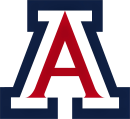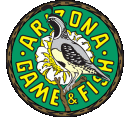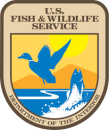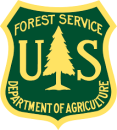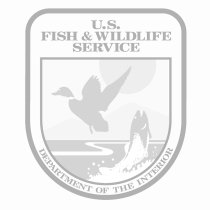Location
States
ArizonaEcosystem
River/stream, WetlandIntroduction
American bullfrogs (Ranacatesbeiana), native to eastern North America, are highly invasive and displace native species in the western United States. For example, in southern Arizona, bullfrogs have successfully established self-sustained populations at the expense of native amphibians such as the Chiricahua leopard frog (CLF; Lithobates (=Rana) chiricahuensis). Water sources in southern Arizona are limited to perennial and intermittent streams, ciénegas (marshes fed by springs), and ponds. Native aquatic species like CLF are highly adapted to hot, dry conditions found in desert environments, yet are not equipped to compete with introduced species like bullfrogs. Bullfrogs can tolerate diverse conditions, reproduce and colonize quickly, and are voracious predators. Furthermore, widely distributed man-made features like cattle tanks and ponds, which support ranching and development, provide additional habitat features for bullfrogs to colonize.
A team of researchers and managers (Frog Team) from the University of Arizona (UArizona), Arizona Game and Fish Department (AGFD), U.S. Fish and Wildlife Service (USFWS), U.S. Forest Service (USFS), and Bureau of Land Management (BLM) have been working to eradicate bullfrogs from several sites in southern Arizona to conserve native aquatic species. Research sites range from federally protected areas like National Wildlife Refuges to private lands. Removal efforts began in the 1990s and were concentrated in San Bernardino National Wildlife Refuge in the extreme southeast corner of Arizona. Bullfrog removal efforts continued here for over a decade, and researchers made key contacts with local ranchers that provided the foundation for future collaboration.
By the early 2000s, bullfrogs were documented in Sycamore Canyon, just south of Tucson, Arizona. Sycamore Canyon is a permanent stream system that supports a diverse range of amphibians, birds, and mammals; jaguar sightings have also been reported in the area. A popular hiking and wildlife viewing site, the public was highly concerned about bullfrogs in the Canyon and strongly supported removal efforts to protect CLF. Field research completed through landscape-scale removal efforts meant that the Frog Team knew where CLF populations remained and how they disperse across the landscape. The success at Sycamore Canyon generated more interest and support for additional bullfrog projects in the vicinity.
Key Issues Addressed
Bullfrogs are widely distributed across the landscape in southern Arizona, and accordingly, they occupy various types of land regardless of land ownership boundaries or management. As a result, effective eradication requires close partnerships with federal agencies, such as USFS and BLM, and with local private landowners or private parties with permits to graze public lands. Permission from landowners is essential for access to remove bullfrogs, and on occasion, obtaining permission can limit access to key sites for bullfrog control, potentially delaying bullfrog control or leaving behind source populations that jeopardize work completed in nearby areas.
Some landowners are reluctant to allow bullfrog removal efforts on their private lands, particularly in the region along the US-Mexico border. Reasons for this reluctance include, eradication efforts require a team of personnel, and methods may require multiple visits to sites, shooting bullfrogs or temporarily draining or modifying cattle ponds and tanks. Bullfrogs were intentionally introduced to the area for sport, but they are no longer viewed as a major food source. Since bullfrog populations established, local communities now have generational knowledge of bullfrogs thriving in the landscape, and there may be cultural resistance to removal. In some cases, Frog Team members have not been able to revisit the same properties to remove bullfrogs because landowners have retracted access to their land. The team must therefore prioritize areas with the best chance for recovering native CLF in conjunction with known land access for conducting bullfrog removal.
Project Goals
- Identify bullfrog populations in southern Arizona and work with local landowners to eradicate bullfrogs located on their land
- Use a suite of public engagement and permitting tools to improve access to privately controlled water bodies
- Improve the success of landscape-scale bullfrog removal through increased public engagement
Project Highlights
Working Together: Through draining and mechanical removal, non-native crayfish, bullfrogs, and fishes were removed from Clyne Pond, which now supports native populations of Chiricahua leopard frogs and Gila Topminnow.
- Working Together: The Frog Team has developed strong relationships with the local ranching community in southern Arizona over the past 25 years. In the Cienega Watershed, for example, the Frog Team has collaborated with local rancher “Doc” Clyne on his multi-generation cattle ranch (the Clyne Ranch) for over a decade. Clyne grazes his cattle on several land parcels managed by Pima County, Bureau of Land Management, and U.S. Forest Service. Since the 1950s, the Clyne family has used an earthen tank to supply year-round water for their cattle. Historically this tank supported CLF, however non-native Largemouth Bass (Micropterus salmoides), Bluegill (Lepomis macrochirus), Mosquitofish (Gambusia spp.), northern crayfish (Faxonius virilis), and bullfrog introductions in the 1960s and 1970s eliminated native CLF populations. Clyne Pond and Spring were found to be source populations of bullfrogs to Cienega Creek (to learn more, see this CCAST Case Study on bullfrog control in Las Cienegas National Conservation Area).
- Safe Harbor Agreements for Conservation: AGFD and USFWS use a Safe Harbor Agreement (SHA), a voluntary agreement with private landowners who want to support CLF conservation, or who may have concerns about land use restrictions that may occur if Chiricahua leopard frogs colonize their aquatic habitats. Participation in the SHA provides landowners assurances that they can continue land and water practices on their lands even though Chiricahua leopard frogs, a species protected by the Endangered Species Act, is found on their property. This reduces concerns about having a federally threatened species on their property and encourages land and water management practices that enhance and maintain habitat for the species.
- Draining Clyne Pond: Clyne Pond is a year-round earthen stock tank located on land managed by the Bureau of Land Management. In late 2010, the Frog Team began efforts to eliminate non-native aquatic species through mechanical methods, as well as pond draining and pumping water for reuse. Bullfrogs were extirpated in 2011 and crayfish in 2014. Since August 2012, Clyne Pond has supported naturally-colonizing CLF, while native Gila Topminnow (Poeciliopsis occidentalis) were introduced in 2016.
- Removals in Clyne Spring: Clyne Spring is a small seep with year-round water. The Frog team extirpated bullfrogs in 2011 and crayfish in 2017, and the spring has been monitored to ensure it remains free of non-native aquatic species.
- Multiple Benefits: Water management projects, such as draining ponds to eradicate bullfrogs and building habitat for CLF recovery, provide multiple benefits to landowners. State and federal funding is often available for landowners with water, or who want to create or improve water on their property, if it directly benefits wildlife, particularly federally-listed aquatic species. Funding can be used for infrastructure such as solar panels, electric wells, or additional ponds.
- Garnering Public Support in the Chiricahuas: Portal, Arizona, is a small town near the Chiricahua Mountains, where private landowners strongly support conservation. The Chiricahuas are a perfect place for CLF conservation, particularly since the species was named after the mountains where it was first described (in 1979) from a specimen collected in Cave Creek. A Safe Harbor Agreement for CLF was put into place in 2010 at the Southwestern Research Station, located along Cave Creek. Many private landowners along the creek were eager to renovate and build new backyard ponds, and sign up their properties as safe harbors. CLF subsequently began moving downstream in the creek and taking residence in landowners’ ponds. Source bullfrogs in the San Simon Valley to the east, however, began spreading closer to the creek. The Frog Team worked closely with a local birding group, Friends of Cave Creek Canyon, to bring awareness to the threat of bullfrogs, and residents have been vigilant about reporting dispersing bullfrogs within Cave Creek. Currently, managers are now working with residents in the valley to the east to try to eliminate source bullfrog populations. Education through one-on-one interactions, and presentations at the annual “Portal Days” festival has built public support for bullfrog removal and native species recovery.
Lessons Learned
Project members learned that the human dimension component of conservation is crucial for successful bullfrog control. Early on, through efforts in the San Bernardino National Wildlife Refuge in the late 1990s and early 2000s, project members discovered that bullfrogs can easily cross 7-10 miles of countryside to reinvade the refuge. Project leaders realized that public engagement would be essential to broaden the spatial scope of bullfrog control efforts. In 2007-2009, David Hall (UArizona) built and expanded on his relationships with local ranchers in the Altar Valley to remove bullfrogs, enabling the subsequent recovery of CLF. Partnerships were also a key reason that the team had support from multiple local ranchers for the Cienega Creek Project in 2010.
Focused efforts in the Cave Creek and East Whitetail sites in the Chiricahua Mountains were made possible through increased public education in the nearby town of Portal. The American Museum of Natural History, which manages the Southwestern Research Station (SWRS), has also been influential in promoting native species conservation. Both Cave Creek and East Whitetail CLF populations largely reside on private properties. No bullfrogs have been detected on East Whitetail properties due to SHA and its location far from other bullfrog populations. On several occasions since 2015, dispersing bullfrogs into Cave Creek and its vicinity were removed due to the vigilance and awareness of the Portal community and the SWRS.
The Frog Team’s original vision was for the Chiricahua Mountains to become bullfrog-free; however in the San Simon Valley the Frog Team has seen how a lack of land access at one or a few sites can prevent full bullfrog removal, and slow CLF recovery efforts. East Whitetail is far enough away from the bullfrog threat, but Cave Creek is under direct threat of bullfrog invasion if bullfrogs from the San Simon Valley are uncontrolled. Although Cave Creek has never had a breeding bullfrog, the threat is that if bullfrogs disperse closer, the adjacent ponds could become breeding sites and threaten CLF recovery.
To eradicate bullfrogs the Frog Team partnered with Clyne for multiple years, and needed to utilize a combination of multiple drainings and mechanical removal. Now, these restored, bullfrog-free cattle ponds provide water to sustain Clyne’s ranching operation and multiple wildlife species. Clyne has since witnessed first hand increases in CLF, as well as many different species of wildlife, including red-tailed hawks and blue herons that depend on native species like CLF and federally-listed Gila Topminnow. According to Clyne, his observed changes in aquatic assemblages are also part of broader ecological conditions, including the spread of non-native Lehmann lovegrass, decreasing native kangaroo rats, and fluctuating deer populations, and he believes long-term success for bullfrog control will require more public education on general wildlife conservation and management.
Clyne has also seen changing public perception over his career, noting that many ranchers today work to preserve the landscape. Ranchers like Clyne, who has witnessed environmental change first-hand over his 50 years of ranching, often choose to work with conservation and management agencies as they lack other options. Clyne also noted that he works with county, state, and federal agencies on his land allotments, as it is more effective to work together than to try to work alone as a result of limited access of public agencies to private land.
Next Steps
- Work with social scientists to research human dimensions of bullfrog control, including the best approaches to private landowners and ranchers who are opposed to bullfrog removal, how to sustain long-term relationships with partners, and how to better tell the story to garner public support - killing a bullfrog to save a native frog can be a confusing public message
- Maintain and build partnerships with local landowners to target new regions for bullfrog control
- Increase public awareness through outreach on how bullfrog control supports native aquatic species conservation while also providing benefits to landowners too.
Funding Partners
- U.S. Fish and Wildlife Service
- U.S. Forest Service
- Arizona Game and Fish Department
- Bureau of Land Management
Resources
- Safe Harbor Agreement for the Chiricahua Leopard Frog (USFWS 2006)
- Final Report (2019): Local Population Dynamics of the Chiricahua Leopard Frog (Rana chiricahuensis) a Federally Listed Frog within the Las Cienegas National Conservation Area in Arizona by David Hall
- Presentation: Chiricahua Leopard Frog Habitat Restoration through Bullfrog Removal by David Hall
- Final Report (2013): Restoring Leopard Frogs and Habitat in the Sky Island Grasslands.
- Annual Report: Chiricahua Leopard Frog Recovery in Arizona 2019. Arizona Game and Fish Department. Note: Please contact Audrey Owens for a copy of this report.
- The Frog Team
- Coronado National Forest
- Appleton-Whittell Research Ranch
- The American Museum of Natural History Southwestern Research Station
Contacts
- Audrey Owens, Ranid Frogs Project Coordinator, Arizona Game and Fish Department, aowens@azgfd.gov
- Cat Crawford, Biologist, Arizona Ecological Services, U.S. Fish & Wildlife Service, cat_crawford@fws.gov
- David Hall, Senior Wildlife Biologist, University of Arizona, davidhall31@gmail.com
- Philip Rosen, Research Scientist, School of Natural Resources and the Environment, University of Arizona, pcrosen@email.arizona.edu
- Cecil Schwalbe, Ecologist Emeritus, School of Natural Resources and the Environment, University of Arizona
- Doc Clyne, Clyne Ranch, Pima County
Case Study Lead Author
- Alex Koeberle, CART Research Specialist, University of Arizona, akoeberle@email.arizona.edu
Suggested Citation
Koeberle, A.L. (2020). “Private Partnerships to Remove Bullfrogs from Cattle Ponds in Southern Arizona.” CART. Retrieved from https://www.fws.gov/project/private-partnerships-remove-bullfrogs.




